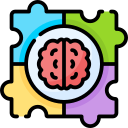Mindfulness Practices for Team Sports: Focus, Flow, and Unity
Today’s chosen theme: Mindfulness Practices for Team Sports. Step into a season where presence shapes performance, mistakes become lessons, and teammates breathe, think, and move as one. Join us, share your rituals, and subscribe for weekly team-tested practices.

Why Mindfulness Elevates Team Play
The Focus–Flow Connection
When athletes train attention like a muscle, they enter flow faster and stay longer. Mindfulness sharpens perception, quiets fear of failure, and frees decision-making, so your team trusts instincts instead of overthinking critical moments.
Shared Awareness Beats Solo Talent
Mindfulness builds a common rhythm across roles. A composed keeper reads angles better, a mindful setter anticipates tempo, and a tuned-in defender rotates early. Synchrony creates seconds of advantage the scoreboard always notices.
Evidence from the Locker Room
A varsity soccer squad added three minutes of focused breathing before drills. Turnovers dropped, chatter improved, and late-game fouls fell. Players reported feeling calmer on corners and more connected after mistakes that once fractured trust.
Breathwork You Can Use in the Huddle
Box Breathing for Crunch Time
Inhale four counts, hold four, exhale four, hold four. Repeat for ninety seconds. Heart rate steadies, tunnel vision widens, and leaders speak with clarity. Try it during timeouts before inbound plays or penalty corners.
Coherence Breathing for Chemistry
Breathe in six seconds, out six seconds, together as a team circle. This simple cadence increases heart-rate variability, boosting calm coordination. It becomes a silent signal: we are one breath, one plan, one purpose.
Nose-First Recovery Between Sprints
Recover with nasal inhales, pursed-lip exhales, twice as long out as in. Carbon dioxide tolerance improves, panic drops, and communication stays crisp. Use this between shifts, then share in comments how your bench energy changes.
Mindful Communication Under Pressure
Before calling a teammate out, pause for two beats and breathe. Identify the play, not the person. This tiny gap reduces reactivity, prevents blame spirals, and makes adjustments land without bruising trust or confidence.
Mindful Communication Under Pressure
Swap vague criticism for precise cues: “Left shoulder pressure—switch early” beats “Wake up.” Clarity is kindness in game speed. Practice crisp phrasing in drills, and invite captains to model it every single rep.
Pre-Game Visualization and Intentions
Walkthroughs in the Mind’s Eye
Close eyes and run through first five minutes of play: opening whistle, first pass, defensive shift, reset cues. Include sights, sounds, and breath. The brain rehearses success, trimming hesitation when reality matches the script.
If–Then Scenario Planning
Create simple mental triggers: “If we concede early, then we breathe twice and execute our press trigger.” These preloaded responses reduce chaos. Share your favorite If–Then in the comments to inspire other squads.
Collective Intention Circle
Each player states one intention: “Composure,” “First step,” “Loud backline.” The circle ends with a unified phrase. This tradition builds meaning and anchors focus when stadium noise or setbacks threaten your mindset.
Handling Mistakes and Momentum Swings
Silently label the emotion—frustration, fear, anger—then reframe: “Data, not drama.” Finally, move with a physical cue: deep exhale, shoulders down, eyes up. This three-step loop turns errors into immediate learning fuel.

Coach and Captain Playbook
Open every practice with sixty seconds of coherent breathing. It signals values: presence before performance. Athletes learn that attention is warm-up number one, not an afterthought squeezed in after tactical diagrams.
Building a Season-Long Mindfulness Plan
Micro-Practices on Practice Plans
Attach one-minute breath breaks between drills, thirty-second intention resets after scrimmages, and five deep breaths before special teams. Thousands of tiny reps wire the habit so it holds when the lights are brightest.
Travel-Day Mindfulness Kits
Pack eye masks, earplugs, a short guided audio, and a team cue card. Use bus time to settle attention and visualize first sets. Share your kit checklist with us and help other teams refine theirs.
Keep the Habit Alive
Rotate a weekly mindfulness captain, log wins in a shared journal, and debrief two mindful moments after games. Subscribe for new drills, and comment with clips of your resets so we can feature your routine.
